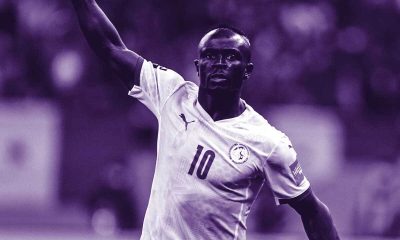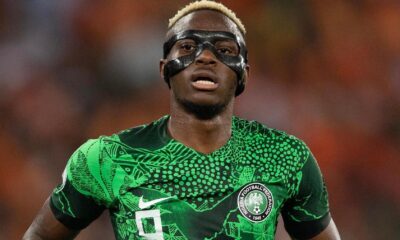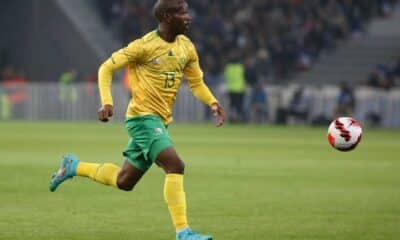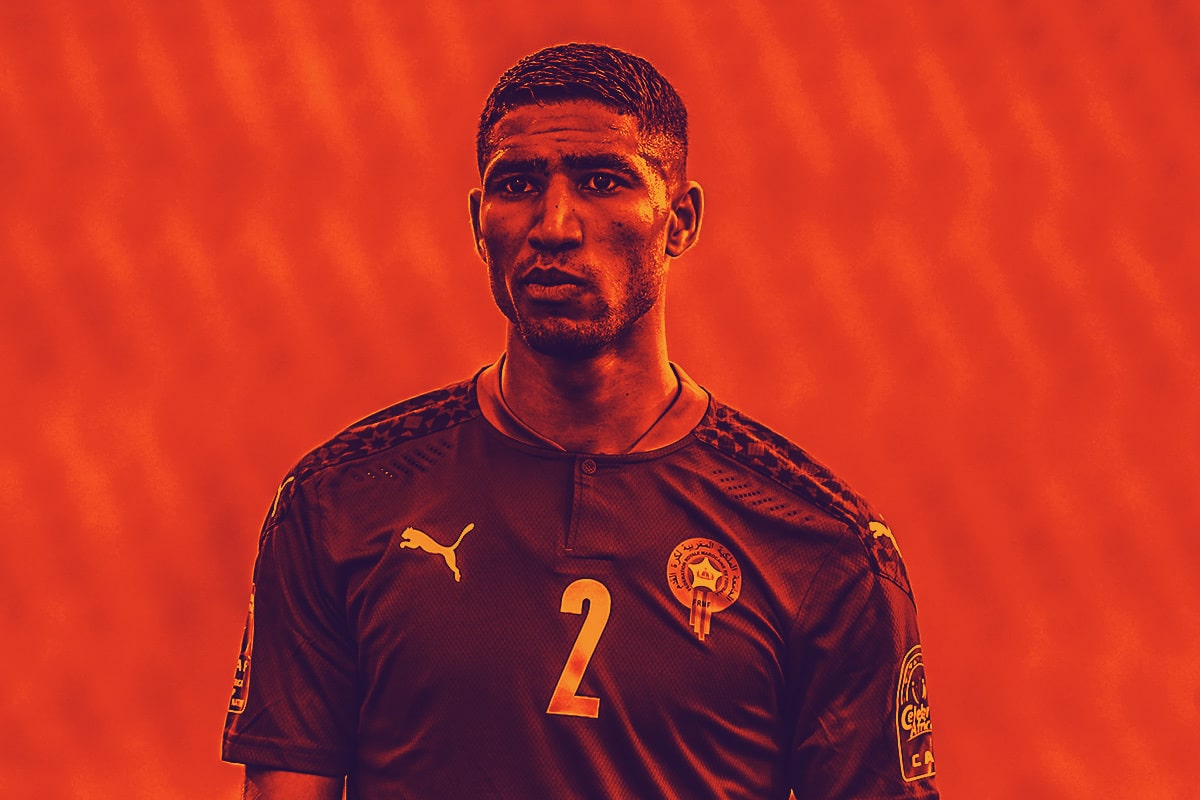
14 November 2019, by: Zach Lowy
After Amajita Promise in 2009, What Happened to SA Football?
For better or worse, 2009 was a monumental year in South Africa’s history. Jacob Zuma was elected as the fourth president in the republic’s history, ‘Mandela Day’ was created to honour former president Nelson Mandela’s legacy, and a wave of violent protests in impoverished townships began to mount, a wave that would soon turn into a tsunami over the coming years.
Nonetheless, most people will remember that period in the nation’s history for the football; the 2009 FIFA Confederations Cup was held in South Africa, as a tune-up for the 2010 FIFA World Cup that would become the first World Cup ever to be hosted by an African nation.
Few remember, however, that 2009 also saw South Africa achieve their greatest ever result in a youth World Cup. Amajimbo’s only trip to the U-17 World Cup saw them finish last in 2015, after picking up one point in a group of Costa Rica, Russia and North Korea.
And while they also exited in the group stage of the 1997 and 2017 editions of the U-20 World Cup, South Africa managed to advance to the knockout round in 2009 after beating Honduras 2-0 in the final group stage match.
When you compare this Amajita team to the one we had at the last World Cup, and the one we had in 2009, then this one is the worst. In terms of talent, fighting spirit, hunger and everything in between. 2009 remains the best followed by the previous World Cup. #Amajita
— A Dog That Bites (@SkepeMatsebane) May 31, 2019
In the Round of 16, they faced an upstart Ghana side that had topped a group of Uruguay, Uzbekistan and England. Serame Letsoaka’s side were the underdogs, but they managed to take the lead in the 58th minute thanks to a goal from Kermit Erasmus, who had scored a brace in their opening match against the United Arab Emirates. But the Black Stars quickly levelled the scoreline via André Ayew, before winning it in extra-time courtesy of a Dominic Adiyiah goal.
Ghana ended up going all the way to the Final, where they would beat Brazil on penalties. Amajita, despite the disappointing end to a promising tournament, could take solace in the fact that they had pushed the eventual champions to the brink. As a new decade beckoned on the horizon, the present and the future of South African football looked bright.
ALSO READ: THE BEST AFRICA XI
But as fate would have it, the initial promise and excitement that marked South African football at the start of the 2010’s would soon fade away. Looking back on the greatest African sides of the decade—-Ghana ’10, Algeria ’14, Ivory Coast ’15—-there isn’t a single South Africa side that pops into the conversation.
Bafana Bafana’s best result this decade came in this year’s African Cup of Nations, which, similarly to the 2009 U-20 World Cup, was held in Egypt and saw South Africa advance out of their group despite finishing third. Under the eye of Stuart Baxter, South Africa played a counter-attacking style and made it to the quarterfinals, despite only scoring three goals in five games.
Perhaps even more concerning than the lack of silverware, though, has been South Africa’s failure to export its best prospects to Europe. The likes of Senegal, Nigeria, and Morocco have all reaped rewards from sending homegrown players to Europe, but take a look at South Africa’s squad from last month, and the dearth of footballers playing overseas sticks out like a sore thumb.
Only six of those players are currently plying their trade in Europe, while Thulani Serero, one of the brightest talents from the 2009 U-20 side, is playing for Al-Jazira in the United Arab Emirates.
11 of the players from Letsoaka’s squad ended up playing for South Africa’s senior team, including Thulani Hlatshwayo, who wears the armband for both club and country. But few have gone on to fulfil their genuine potential.
Erasmus, who was ranked #18 amongst World Soccer’s ‘Top 50 Teenagers in Football’ in 2007, returned to his homeland in 2010 after failing to make the grade at Feyenoord. He would return to Europe six years later, bouncing around from France to Portugal to Sweden, before signing for Cape Town City last year. It begs the question–was this team more ‘fool’s gold’ than ‘real deal?’
According to Rob Delport, Football Manager’s Head Researcher for South Africa, the signs of stagnation were there from the beginning.
“I can remember the U-20s well, and they were fortunate to get to the knockout rounds. Until our youth structures are developing a higher standard of players regularly, we’ll always be remembering certain generations as overachievements.”
One of the factors that played a key role in Erasmus’s initial departure from Europe was the wave of minimum salary requirements that was taking place across the continent. Thanks to a change in FIFA’s work permit rules, U-18 foreigners had to be paid a certain wage, and despite Erasmus impressing on loan at Excelsior, with 11 goals in 30 matches, his parent club Feyenoord felt that the wage they would be forced to pay him was too high for his talent level. As such, he was released from the club despite still having a year left on his contract, and returned to SuperSport United.
Another dilemma that curbed South Africa’s best prospects from trying their luck in Europe was the fact that they could already take home decent wages at home.
“The top local stars can earn more here than in many European countries,” said Delport. “If player A is earning R 300,000 a month here but can’t get into the top eight leagues, he stays because he’s not going to take a wage cut.”
For one reason or another, South Africa continues to lag behind expectations both in talent production and trophy collection. Whether it’s due to poor coaching, a lack of first-team football, or a failure to work hard enough, South Africa simply isn’t one of the premier African footballing nations anymore. That wasn’t always the case.
While South Africa were expelled from the Confederation of African Football (CAF) in 1958 and from FIFA in 1972 due to the nation’s apartheid system, they were readmitted in 1992 and won the African Cup of Nations (AFCON) four years later. It was then that they would achieve the highest FIFA ranking in their history -16th place. They would follow up their only trophy to the date with a second-place finish in the 1998 AFCON, an appearance in the 2000 FIFA World Cup, and a third-place finish in the 2000 AFCON.
On the cusp of the new millennium, South Africa were seen as one of African football’s rising stars along with Burkina Faso and Zambia. But that all changed when the South African Football Association (SAFA) began their campaign to host a World Cup.
“Our football suffered when our focus turned to hosting rather than development; the ball game took second fiddle to the big picture,” remarked Delport. “The global game started improving, we didn’t keep up on the field, and it took the World Cup being over for us to start catching up.”
In addition, generational change played a role in the decrease in production amongst South African players. The first wave of Bafana Bafana players “were fighters,” per Delport. “They’d been through stuff…the second generation not so much. They’d gotten used to home comforts, hadn’t struggled as much, and found going abroad daunting.”
Nearly every country, especially those not amongst the footballing elite, specializes in producing certain types of players, yet leaves something to be desired in the other positions. South Africa is no different. The nation produces plenty of wingers, such as Luther Singh and Percy Tau, and plenty of defensive midfielders, such as Bongani Zungu and Lebogang Phiri, but struggles to cultivate players of different profiles.
Part of this has to do with the lack of academy structures; out of the 32 professional clubs in the Premier Soccer League’s (PSL) top two divisions, only eight have proper youth teams. As such, many players miss out on the experience to test themselves against top-quality, professional opposition from a young age.
Nonetheless, as we turn the page on a new decade, there is a reason for optimism. The MultiChoice Diski Challenge (MDC) under-20 league has provided youngsters with necessary game-time and coaching at the professional level. While the MDC was previously a reserve league mainly used to provide senior players with game-time upon their return from injury, the PSL changed the regulations this year to focus its purpose solely on developing youth. And with sponsorship from satellite TV behemoth SuperSport, it has the wind beneath its wings to propel itself to success.
The likes of Kobamelo Kodisang, Keano Cupido and Reeve Foster look set to usher in a new generation of talent, and Africa’s second-biggest economy will look to churn that financial wealth into prosperity on the pitch, as they attempt to make up for lost time and catch up to the likes of Nigeria and Senegal. But if they’re going to do so, though, South Africa’s footballers, managers, and leaders all need to take a step outside their comfort zones.
MORE SOCCER





















